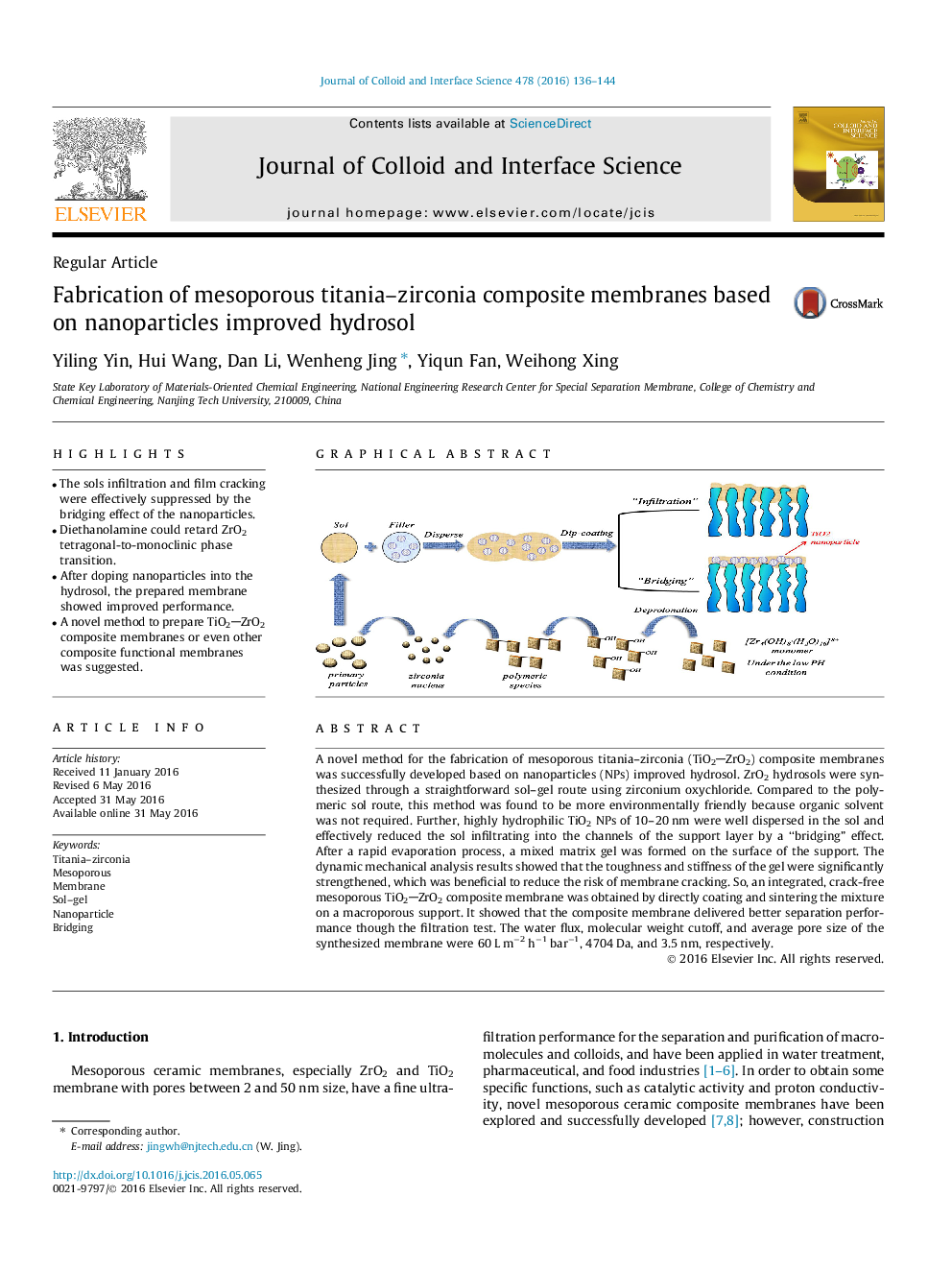| کد مقاله | کد نشریه | سال انتشار | مقاله انگلیسی | نسخه تمام متن |
|---|---|---|---|---|
| 606208 | 1454517 | 2016 | 9 صفحه PDF | دانلود رایگان |

• The sols infiltration and film cracking were effectively suppressed by the bridging effect of the nanoparticles.
• Diethanolamine could retard ZrO2 tetragonal-to-monoclinic phase transition.
• After doping nanoparticles into the hydrosol, the prepared membrane showed improved performance.
• A novel method to prepare TiO2ZrO2 composite membranes or even other composite functional membranes was suggested.
A novel method for the fabrication of mesoporous titania–zirconia (TiO2ZrO2) composite membranes was successfully developed based on nanoparticles (NPs) improved hydrosol. ZrO2 hydrosols were synthesized through a straightforward sol–gel route using zirconium oxychloride. Compared to the polymeric sol route, this method was found to be more environmentally friendly because organic solvent was not required. Further, highly hydrophilic TiO2 NPs of 10–20 nm were well dispersed in the sol and effectively reduced the sol infiltrating into the channels of the support layer by a “bridging” effect. After a rapid evaporation process, a mixed matrix gel was formed on the surface of the support. The dynamic mechanical analysis results showed that the toughness and stiffness of the gel were significantly strengthened, which was beneficial to reduce the risk of membrane cracking. So, an integrated, crack-free mesoporous TiO2ZrO2 composite membrane was obtained by directly coating and sintering the mixture on a macroporous support. It showed that the composite membrane delivered better separation performance though the filtration test. The water flux, molecular weight cutoff, and average pore size of the synthesized membrane were 60 L m−2 h−1 bar−1, 4704 Da, and 3.5 nm, respectively.
Figure optionsDownload high-quality image (108 K)Download as PowerPoint slide
Journal: Journal of Colloid and Interface Science - Volume 478, 15 September 2016, Pages 136–144